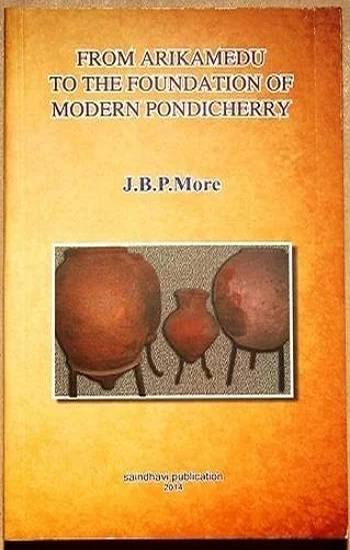This book deals with the history of Pondicherry from the time of the coming into existence of Arikamedu, reputed to be a Roman trading centre, located to the south of Pondicherry town until the time when modern Pondicherry was founded by Frenchmen like Bellanger de Lespinay, François Martin and Pierre Deltor. The ancient Arikamedu cannot be idenitifed with the Pondicherry town. According to the great medieval Arab navigator Sulaiman al-Mahri, Pondicherry existed as Bandikari only from the late 15th century or early 16th century. Later in the course of the sixteenth century, it was also called as Puducheira or Puduchery as it was a new town. Arikamedu was never proved to be an all-season port or a great port town. There is no evidence in ancient Sangam and also medieval literature to this. There is also no evidence in the temple inscriptions which are abundant in the Pondicherry region. There is also no trace of a temple or its foundations or administrative and residential quarters in the site. At the most trade would have been carried on at Arikamedu only when the Ariyankuppam River became navigable in the rainy season as pointed out by French royal astronomer, Le Gentil in the 1760s. Therefore Arikamedu was just a coastal mart or seasonal port and not a big town or a permanent all-season port.
Arikamedu and the adjoining Ariyankuppam region was actually given by the Mughal ruler of the region Daoud Khan to the French only in 1700s. If it was given to the English, then this confusion between Arikamedu and Pondicherry created by French colonial scholars like Jouveau-Dubreuil, Jean Filliozat and Pattabiramin and carried forward by more recent scholars like Jean Deloche would not have risen.
The Arab navigator Sulaiman al Mahri has mentioned Pondicherry as Bandikari in his accounts. This was the time when the Nayak of Senji, MuthuKrishnappa allowed the Portuguese to set up a godown in Pondicherry for trade purposes. Goods were transported to the place by bullock-carts, which were known as Vandi in Tamil. As a result a chery had come up in the area and it was naturally called Vandichery i.e. a place of Vandis. This Vandi when pronounced in Telugu becomes ‘Bandi’ and therefore ‘Bandicheri’. This naturally resembles the ‘Bandikari’ as noted by Sulaiman al Mahri. It should be noted that the Nayak of Senji was a Telugu and many of the merchants in the area were also Telugus. They naturally used ‘Bandicheri’ to signify Pondicherry. In the course of time ‘Vandichery’ and ‘Bandicheri’ becomes ‘Pandichery’ for the Tamils who were predominant in the area. This ‘Pandichery’ was corrupted by the French as ‘Pondichéry’ and by the English as ‘Pondicherry’. So ‘Pandichery’ is the original Tamil place name derived from Vandichery or Bandicheri. It existed even before Puduchery.
The book also throws light on the political and economic evolution of Pondicherry from the time the Portuguese established a godown there until 1706 when François Martin, the first French Governor of Pondicherry died. It maintains that Pondicherry came into existence during the period when MuthuKrishnappa Nayak was the Rajah of Senji. The French took possession of Pondicherry only during 1673-74, which paved the way for the gradual emergence of modern Pondicherry. Frenchmen like Bellanger de Lespinay, Pierre Deltor and François Martin as well as the Dutch have each played significant roles in the emergence and foundation of modern Pondicherry.

